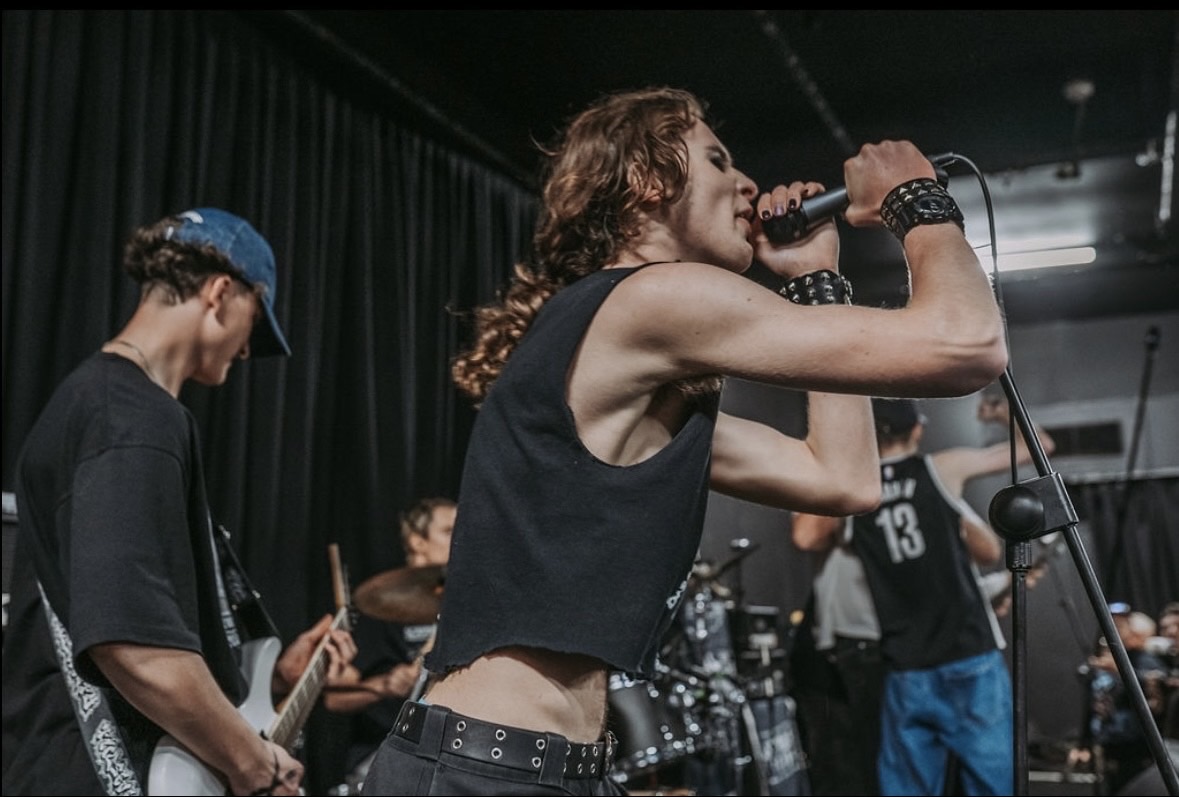South of the city of Melbourne, beneath the surface of Port Phillip Bay, lie vast forests of kelp.
Just like trees in terrestrial ecosystems, kelp provides shelter and food for a complex living community. And just like our forests on land, the kelp of Port Phillip Bay is struggling with assaults on multiple fronts – global heating, human encroachment and invasive species.
Human interventions are needed to mitigate human impacts, and one underwater intervention is surprisingly similar to managing invasive species on land.
A few times a year, when conditions are right, Parks Victoria Marine Ranger Monique Bregman leads a team of divers out into Port Phillip Heads Marine National Park to deadhead weeds.

The vigorous invasive kelp Undaria pinnatifida arrived in Port Phillip Bay in the late 1990s, likely on the hull of a container ship. Since then, it has spread across the bay, competing with native kelps like golden kelp, Ecklonia radiata.
Today, you can see undaria beneath most jetties around the city, swaying gently in the current. You also might have seen it swaying gently in a bowl of miso soup. Undaria is a traditional food in east Asia, usually known in the west by its Japanese name, “wakame”.
“You’d never eradicate it, you’d never get rid of it,” says Bregman who leads the marine and coastal programs for Parks Victoria.
“If we can let certain small spaces be undaria free, it’s helping the biodiversity of that marine space cope with all the other pressures it’s having to face.”
Like most invasive species, undaria grows quickly and reproduces prolifically. It quickly takes over places where native kelp has died back due mainly to increasing sea surface temperatures, together with pollution, disturbance or overgrazing by sea urchins. Once it appeared in Port Philip Bay, it was always going to stick around.
One of the small spaces Parks Victoria is intent on suppressing undaria is Popes Eye, a popular dive spot where a huge variety of marine creatures and corals occupy the incomplete footings of a 19th century fort.
The four-hectare protected zone supports a native kelp forest and cool water reef. Undaria was first noticed there in 2017 and, soon after, Parks Victoria removed over two tonnes of the seaweed. These days they only remove the reproductive part of the seaweed, the sporophyll, in a process similar to deadheading flowers.

Bregman’s team dives on calm days during a narrow window of time when the tide is moving slowest, called the slack water tide. Out on the reef, they move along the whole horseshoe of Popes Eye cutting juvenile plants off at the base with scissors. These will float away and decay. Wherever they find the reproductive part of the plant, they cut it off and put it in a ziplock bag to contain any spores released.
Bregman has been weeding Popes Eye for seven years now and says it has definitely had a positive impact. The rich biodiversity of the kelp forest has not declined in the same way as other reefs where undaria has been allowed to dominate.
One key aim of weeding is to maintain safe havens of native habitat while marine animals adapt to the new undaria forests. Recently, some herbivorous fishes have begun to be observed eating undaria, but Bregman says it will take a long time for the whole ecosystem to adapt to it as the dominant seaweed species.
Meanwhile, the humans living around Port Phillip Bay have been far quicker to realise the value of undaria as a food source, thanks to the efforts of people like Mike Houghton and Ric De Vries.
Soon after undaria arrived, they applied for, and obtained, a license to commercially harvest seaweed in Port Phillip Bay. They have been selling locally harvested wakame, and promoting it as a sustainable “superfood” ever since.
Despite wide fields of undaria spreading around our coasts, the vast majority of wakame consumed in Australia is imported. Haughton says the wakame industry in Australia can expand but he is adamant that good regulation is required to maintain high standards.
“It really worries me that you get idiots out there who think ‘oh beauty, this is a good way to make a quick dollar”, they’ll harvest wakame and dry it in their backyard … but it’s not that simple”.
Haughton’s business, The Australian Seaweed Company, cannot harvest within marine protected areas such as Popes Eye. They have repeatedly applied for permits to harvest undaria from the marine parks in Port Phillip Bay, but have been rejected each time.
Citizens can’t remove anything from within the no-take zone of the Marine Park, even invasive species. According to Bregman, Parks Victoria wants to keep that boundary firmly in place. Illegal fishing may be an even more pressing threat to the underwater environments of the bay.
Bregman says we could never harvest enough wakame to eliminate it from Port Phillip Bay. For good or ill, it’s here to stay, but she hopes that maintaining some refuges free from undaria will give underwater organisms the best chance of adapting to the many changes they face.

This story is co-published with Cosmos online – ‘The Science of Everything’ as part of a special series, Gone Feral, on invasive species.





















